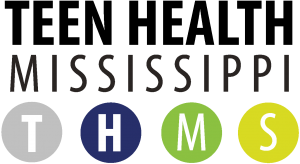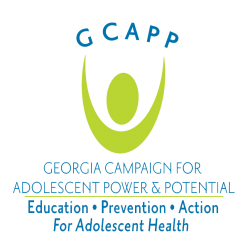Training
Barriers to Abortion Access for Michigan Minors
Unplanned pregnancies are challenging for any population, but particularly for adolescents. When dealing with issues like pregnancy and abortion, teens are often denied the tools to make informed and autonomous decisions. This training will work with participants to identify and set aside individual judgments in order to provide unbiased support to pregnant adolescents. The training will also cover mandatory parental involvement laws, judicial bypass, and how to help minors navigate the judicial bypass system.
In this training, participants will:
- Identify own biases around abortion and teen pregnancy.
- Gain an understanding of unique barriers teens face to access abortion services.
- Define and review parental involvement laws and judicial bypass.
- Define requirements for judicial bypass.
- Describe the judicial bypass process.
- Discuss findings from MOASH's Michigan Youth (MY) Rights project.
In person Online
Age Group(s) - Grades 6-8, Grades 9-10, Grades 11-12
Topic(s) - Sex education in schools, Values
Professional Learning Standards for Sex Education (PLSSE) Indicators
Sex Education In Schools Indicators - Indicator 1 (K-12): Describe three health (e.g. physical, social and/or emotional) and/or academic benefits of sex education for young people
- Indicator 2 (K-12): Describe state and/or district laws, policies, and standards that relate to sex education where one teaches.
Values Indicators - Indicator 1 (K-12): Explain the differences between personal and universal values relating to sexuality.
Technical Assistance
Age Group(s) - Grades K-2, Grades 3-5, Grades 6-8, Grades 9-10, Grades 11-12
Professional Learning Standards for Sex Education (PLSSE) Indicators
Training
What's Up With Teens These Days?: Classroom Management Edition
Participants will be reminded of normal patterns of development during adolescence and discuss strategies for maintaining professionalism with adolescent students.
This training is designed for:
- Teachers
- Substitute Teachers
- Counselors
- Coaches
- Educators
In person Online
Age Group(s) - Grades 6-8, Grades 9-10, Grades 11-12
Topic(s) - Puberty and adolescent development
State(s) - Alabama,
Alaska,
Arizona,
Arkansas,
California,
Colorado,
Connecticut,
Delaware,
Florida,
Georgia,
Hawaii,
Idaho,
Illinois,
Indiana,
Iowa,
Kansas,
Kentucky,
Louisiana,
Maine,
Maryland,
Massachusetts,
Michigan,
Minnesota,
Mississippi,
Missouri,
Montana,
Nebraska,
Nevada,
New Hampshire,
New Jersey,
New Mexico,
New York,
North Carolina,
North Dakota,
Ohio,
Oklahoma,
Oregon,
Pennsylvania,
Rhode Island,
South Carolina,
South Dakota,
Tennessee,
Texas,
Utah,
Vermont,
Virginia,
Washington,
West Virginia,
Wisconsin,
Wyoming
Professional Learning Standards for Sex Education (PLSSE) Indicators
Puberty and Adolescent Development Indicators - Indicator 1 (K-12): Describe how puberty prepares the human body for the potential to reproduce.
- Indicator 2 (K-12): List three physical, three social, and three emotional changes that occur during puberty.
- Indicator 3 (K-12): Identify three practices that students can adopt for maintaining healthy habits beginning during puberty.
Training
Michigan Sex Education Policy and Law: Best Practices for Sex Education in Michigan
This training will walk participants through current Michigan law and policy as it relates to sex education in K-12 schools. We will review content requirements and spend time on Sex Education Advisory Boards (SEABs), the groups that set goals and objectives and review and recommend curriculum for their local school districts. We will share the most up-to-date, evidence-based information on sex education - content specifics, facilitation strategies, scope and sequence, outcome indications, and more. Finally, we will discuss best practices for SEAB establishment and functioning.
In this training, participants will:
- Review relevant and current data on sex education.
- Review state laws and requirements for sex education.
- Review state laws on Sex Education Advisory Boards (SEABs).
- Review SEAB logisitics, including meetings, membership, and curriculum review.
- Understand the scope of the SEAB's power and influence in a school district.
- Identify resources and next steps for SEABs.
- Discuss evidence-informed best practices for sex education programming.
- Review sex education resources and ways participants can get involved in improving sex education in their community.
In person Online
Age Group(s) - Grades K-2, Grades 3-5, Grades 6-8, Grades 9-10, Grades 11-12
Topic(s) - Contraception, pregnancy, and reproduction, Creating an inclusive and affirming learning environment, Effective teaching strategies, Healthy relationships, HIV and other sexually transmitted diseases/infections, LGBQ+ identities, Racial and reproductive justice, Transgender and gender expansive identities, Sex education in schools, Values
Professional Learning Standards for Sex Education (PLSSE) Indicators
Contraception, Pregnancy, and Reproduction Indicators - Indicator 6 (6-12): Identify three federal and/or state laws that impact young peoples’ access to effective reproductive and sexual health care (e.g. age of consent for services, confidential access to health care services, and access to condoms)
Creating and inclusive and affirming learning environment Indicators - Indicator 1 (K-12): Demonstrate three techniques to create an inclusive and affirming learning environment. (S)
- Indicator 4 (K-12): Demonstrate three strategies of a trauma-informed approach to sex education (e.g. giving trigger warnings before content on sexual assault and allowing students the right to pass as appropriate, etc.). (S)
Effective Teaching Strategies Indicators - Indicator 5 (K-12): Describe three effective strategies for practicing skills with students.
- Indicator 6 (K-12): Describe three strategies for actively involving parents, caregivers, and other trusted adults in a sex education program.
- Indicator 7 (K-12): Demonstrate the ability to analyze and tailor lesson plans to match the age, developmental stages, cultural backgrounds, and other identities of students. (S)
Healthy Relationships Indicators - Indicator 4 (K-12): Describe three strategies for incorporating the positive and negative impacts of communicating through technology into lessons on healthy relationships.
- Indicator 5 (K-12): Describe three ways to help students set and respect personal boundaries in relationships.
HIV and other sexually transmitted diseases/infections Indicators - Indicator 7 (6-12): Identify three medically accurate and youth-friendly resources for STD/STI and HIV prevention, testing, and treatment
LGBQ+ Identities Indicators - Indicator 6 (K-12): Explain three ways that LGBQ+ youth are at disproportionate risk for health disparities.
- Indicator 7 (K-12): Identify three credible, medically accurate, youth-friendly resources that can provide information or support related to sexual orientation.
- Indicator 8 (K-12): Explain why it is essential to include positive portrayals of LGBQ+ people in lessons.
- Indicator 9 (K-12): Demonstrate three strategies that can be used to include positive portrayals of LGBQ+ people in lessons. (S)
Racial and Reproductive Justice Indicators - Indicator 2 (K-12): Name three sexual health inequities and some of their systemic causes (e.g., African American women living with HIV have expressed mistrust toward healthcare professionals, in part, as a result of systemic racism).
- Indicator 3 (K-12): Describe three ways power, privilege, prejudice, discrimination, and stereotypes related to age, race, ethnicity, sexual orientation, gender, gender identity, socio-economic status, immigration status, and/or physical or intellectual ability can impact sexual health and reproductive justice.
- Indicator 5 (K-12): Describe three strategies educators can use to acknowledge and proactively work to mitigate the impact of bias on their students’ sexual health and multiple, intersecting identities.
Sex Education In Schools Indicators - Indicator 1 (K-12): Describe three health (e.g. physical, social and/or emotional) and/or academic benefits of sex education for young people
- Indicator 2 (K-12): Describe state and/or district laws, policies, and standards that relate to sex education where one teaches.
Transgender and Gender Expansive Identities Indicator - Indicator 9 (K-12): Demonstrate three strategies that can be used to make lessons affirming for transgender and gender expansive people. (S)
Values Indicators - Indicator 1 (K-12): Explain the differences between personal and universal values relating to sexuality.
Training
Sexual Violence 101
This training is a brief overview of various forms of sexual violence, including rape, sexual harassment, and stalking, in addition to the importance of consent. We will discuss SB401 and look at how that has impacted sexual violence prevention education in schools. We will review curriculum options and programs for addressing this mandate.
In person Online
Cost - Please contact alexandra@gcapp.org for details
Age Group(s) - Grades 6-8, Grades 9-10, Grades 11-12
Topic(s) - Consent and interpersonal and sexual violence, Disclosure, Healthy relationships
Professional Learning Standards for Sex Education (PLSSE) Indicators
Consent, Interpersonal and Sexual Violence Indicators - Indicator 1 (K-12): Define consent.
- Indicator 2 (K-12): Explain why consent is a fundamental right for people of all ages.
- Indicator 3 (K-12): Differentiate between situations in which sexual consent is and is not present.
- Indicator 4 (K-12): Identify three youth-friendly resources to assist survivors of sexual assault, abuse, incest, or domestic violence.
- Indicator 5 (K-12): Explain sex trafficking and the state laws related to it.
Disclosure Indicators - Indicator 4 (K-12): Explain the roles and responsibilities of a mandated reporter.
- Indicator 5 (K-12): Explain the state- and district-mandated reporting requirements and procedures.


